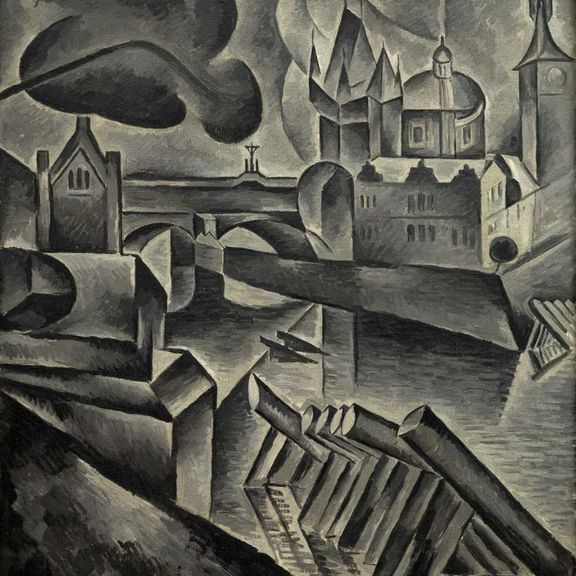
mixed media (oil, enamel, sand) on canvas
1928
lower right
27 × 35.5 cm
framed
Still Life with a Goblet represents Filla’s high-quality cubist peak period of the second half of the 1920s. The joy of creating, which was also positively evaluated by critics at this time, was manifested in the ease with which he constantly sketched new compositions. He devoted himself mainly to still-life painting, which he already admired in the 17th-century Dutch painters: “Our preference for Dutch still-life stems definitely from our desire to be and remain realists of life. Realism in art understood more broadly could be traced and directed into one continuous stream from ancient times to the present.” (E. Filla: Thoughts, Ústí nad Labem 1990, p. 76) Filla’s interest in still life was not limited to Dutch masters; he also studied Czech realist painters of the 19th century and their hunting scenes. Grounding in realism became Fill’s lifelong belief, which he moved towards by various means. He never embarked on the path of abstraction.
The composition of the presented painting consists of two opposites, one organic and the other inorganic. The hanging pigeon refers to genre scenes from the Baroque period. The glass goblet represents timelessness, referring to the material which became very popular after the Paris Exhibition of Decorative Arts in 1925. The centre of the composition marks the red apple, reminiscent of a popular, similarly shaped confection. Ingeniously distributed colour fields build the background of the picture and freely permeate the entire surface of the canvas. Geometric elements intertwine with abstract plans and thus bring an element of tension into the work. Still Life with a Goblet is a fine example of Filla’s work from his most productive period. On the stretcher is the artist’s No. F 285 in red pencil and the stamp of the Mánes shop. The work comes from a high-quality and unique post-revolution collection. Authenticity has been verified by the Filla Foundation, and the painting will be listed in the upcoming inventory of Filla’s work. Assessed during consultations by PhDr. K. Srp and Mgr. T. Mátl Donné. The expertise of PhDr. R. Michalová, Ph.D., is attached.







